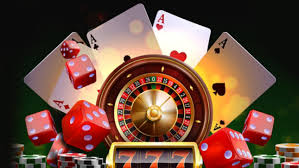
The Ultimate Guide to Poker Betting Strategies
When it comes to poker, understanding the intricacies of betting strategies can make the difference between a novice and a seasoned player. The art of betting in poker is more than just putting chips in the pot; it involves psychology, mathematics, and game theory. This guide will delve deep into essential poker betting strategies that can elevate your game. Also, check out the The Ultimate Guide to Poker Betting Strategies baji999 অ্যাপ for exciting poker games and strategies on the go.
1. Understanding the Basics of Betting
Before diving into advanced strategies, it’s crucial to grasp the basics of betting in poker. The betting rounds vary depending on the type of poker you are playing, but generally, the principal actions are:
- Check: Passing the action to the next player without putting any money into the pot.
- Bet: Putting chips into the pot when it is your turn to act.
- Call: Matching the current bet made by another player.
- Raise: Increasing the size of the current bet.
- Fold: Discarding your hand and relinquishing any claim to the pot.
2. The Importance of Position
Your position at the table significantly impacts your betting strategy. Players who act later in a betting round have more information about how their opponents are playing. Here are a few tips based on position:
- Early Position: Be more conservative; you’ll have less information on other players’ hands.
- Middle Position: You can start to widen your range of hands and make more aggressive plays.
- Late Position: You can leverage your position to bluff more effectively and pressure opponents with weaker hands.

3. Bluffing Wisely
Bluffing is one of the most exciting and strategic elements of poker. However, successful bluffing requires careful consideration and timing. Here are some tips for effective bluffing:
- Understand Your Opponents: Choose opponents who are likely to fold – tight players are better targets.
- Consider the Story: Your betting should tell a consistent story about the strength of your hand.
- Betting Patterns: Use varied bet sizes to add credibility to your bluffs.
4. Value Betting
Value betting is the key to extracting profit from strong hands. Here’s how to implement effective value bets:
- Know Your Opponents: Identify how much they are willing to call with weaker hands.
- Size Your Bets: Make larger bets when you expect your opponent has a strong but inferior hand.
- Be Patient: Don’t rush to bet with a good hand; allow the pot to grow.
5. Managing Your Bankroll
A fundamental part of poker strategy is bankroll management. Even the best players can have losing streaks, so protecting your bankroll is vital:
- Set a Budget: Determine how much you are willing to spend and stick to it.
- Game Selection: Choose games where you have a skill advantage over the competition.
- Define Limits: Establish both winning and losing limits to control your gambling behavior.
6. Tailoring Your Strategy to Game Types
Different poker variants require different strategies. Here’s an overview of how to adjust your betting strategies for popular game types:
- No-Limit Texas Hold’em: Focus on pot odds and adjust bet sizes based on stack sizes.
- Pot-Limit Omaha: Consider the potential of your hand to improve, leading to aggressive betting.
- Seven Card Stud: Bet aggressively when you have a strong possibility of making a winning hand from the visible cards.
7. Reading Opponents
The ability to read your opponents is essential for developing a successful betting strategy. Here are some aspects to focus on:
- Physical Tells: Watch for nervous behaviors or confident postures that can indicate the strength of a hand.
- Betting Patterns: Pay attention to how your opponents bet in various situations, as these patterns might reveal their hand strength.
- Timing: Quick calls or bets might indicate strength, while hesitations could signal weakness.
8. Adapting to Changing Tables
A significant part of poker is adaptability. As the table dynamics evolve, so must your strategies. Consider these elements:
- Player Types: Evaluate if the table is comprised of aggressive players or passive players and adjust your strategy accordingly.
- Table Image: Manage how others perceive you based on your betting patterns and adjust your play to exploit that image.
- Trends: Observe new betting trends that emerge as players adjust their strategies during a session.
9. Review and Adjust Your Strategies
After each poker session, take the time to review your hands and betting strategies. Watch for:
- Mistakes: Identify any common errors in your betting decisions.
- Successful Tactics: Note what worked and try to replicate those tactics in future games.
- Opponent Strategies: Reflect on how well you adapted to different opponents and identify areas to improve.
Conclusion
The world of poker betting is multifaceted, and successful players harness a variety of strategies to maximize their chances of winning. By understanding the basics of betting, maintaining proper bankroll management, learning when to bluff or value bet, and adapting to the dynamics of the game, you can enhance your performance at the poker table. Whether you’re a casual player or looking to take your game more seriously, these strategies will provide a strong foundation to build upon. Remember, poker is not just a game of cards; it’s a game of skill, strategy, and psychology. Good luck at the felt!
